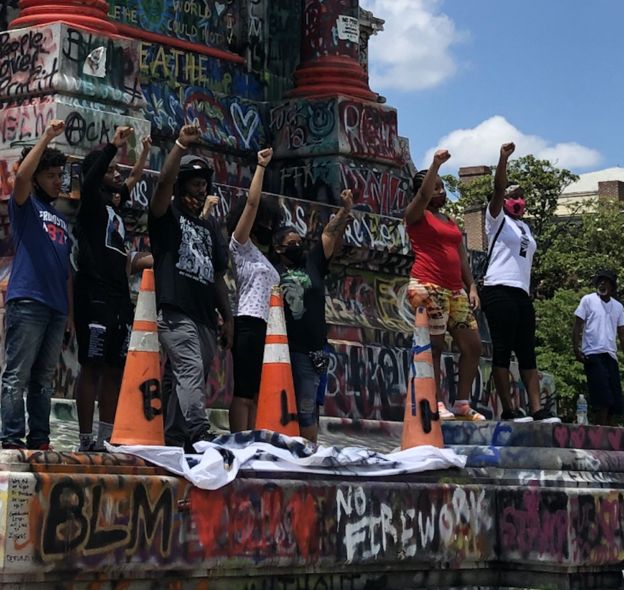Part of the soul-searching in the US in the two months since the killing of George Floyd has been focused on examining the history that led the country to this point.
Confederate statues have been pulled down in many cities and there are calls for a more honest look at the ways in which slavery, segregation and discrimination have shaped modern day America.
But there are those who feel that there are some beyond these shores who should be reflecting on their country’s role in it all.
“Britain put its stamp on America from the beginning. It was Britain who brought the first unfree Africans to this country and helped to start slavery in America,” says Professor Cassandra Newby-Alexander, a historian at Norfolk State University in Virginia.
At Old Point Comfort, where people now fish on the nearby jetty, she points out the spot where it is believed the first ship carrying slaves came into what was then the colony of Virginia.
“It was late August of 1619, and it was the English vessel White Lion,” Professor Newby-Alexander says of the ship that it is believed brought 20 men and women that had been ripped from their homeland in what is now Angola.
“Once they were here, they began to sell those individuals that they saw as part of their cargo to the leadership in the colony.”
So started a legacy that has reverberations still being keenly felt today.
Professor Newby-Alexander readily accepts the culpability of Americans in perpetuating that legacy, but says that by the time the British ceded control, society here had already been shaped around the institution of slavery.
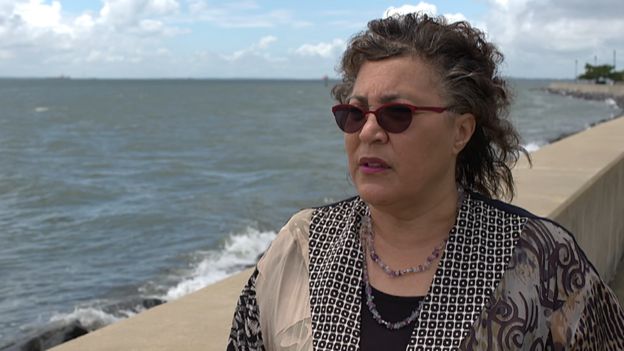
“America didn’t become officially America until 1783 when the Treaty of Paris was signed. Up until that point, everything that America created was English, including slavery, including laws on which slavery and inequality was built,” she says.
“It came from England. It came from the English system.
“If you claim that America has its foundational culture based on England, then you’ve got to take it all. That includes the systemic racism in our laws, in our practices and in our culture.”
Policing in the southern United States had its origins in slave patrols set up under the British in the early 1700s. Local laws started to be drawn up that regarded black people as inferior.
Professor Newby-Alexander draws a direct line to the issues America faces today.
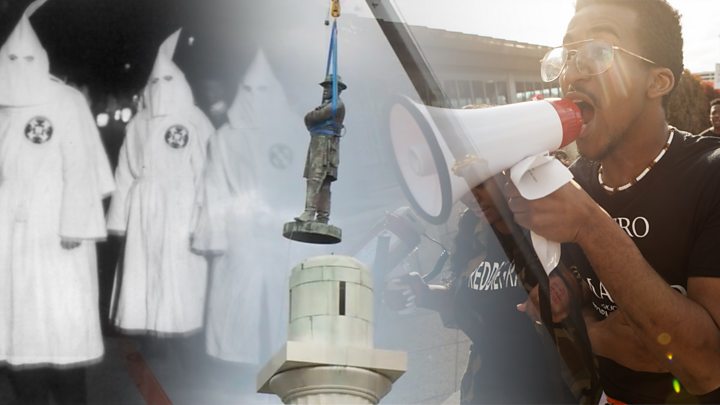 Racism in the US: Is there a single step that can bring equality?
Racism in the US: Is there a single step that can bring equality?“The policing that we see that automatically assumes that a black person is a criminal, is already guilty, that started from the founding of our country that viewed Africans as systemically different.”
Of course, centuries on, America needs to shoulder responsibility for where things are.
It won independence from Britain, but then there was civil war, with the confederate south fighting to keep slavery.
A lot of the British elite again found themselves on the wrong side of history. They sent supplies and arms to the confederacy, many wanting slavery to continue because of their own business interests. Their side was defeated.
But years later, in the former confederate capital of Richmond, Virginia, that did not stop the building of imposing statues of confederate leaders.

It was part of a movement that eventually became known as “The Lost Cause”, a re-writing of the narrative of slavery as being just, and the war as being one fought on noble grounds.
The statues in Richmond and across the southern United States also performed another function.
“We were always told that they were built to intimidate,” says Chelsea Higgs Wise, a community activist in Richmond.
“We were told don’t look up at them, keep walking straight. You don’t have to look up to that white man. They made it that big so that you would have to hurt your neck to look up to them. But we’re done with that,” she says.
Ms Higgs Wise has been one of those involved in tearing down the statues that she says have haunted generations of black families here.
“We have been talking for years about removing the Confederate monuments. We’ve had commissions. We’ve had reports. We’ve had budget lines. But it was the young people that just came out with some rope and decided, we’re going to do this tonight and we got it done,” she says.
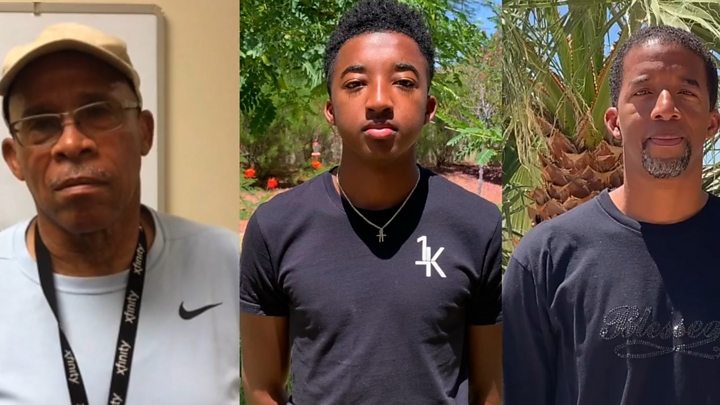
“If it was up to us to change the laws, the policies, and we could do it with rope, we would do that as well.”
Ms Higgs Wise says that to this day the legacy of slavery pierces the consciousness of Black Americans in a way that is hard for others to understand.
She wants the plinths of those removed confederate statues, now daubed with graffiti of Black Lives Matter slogans and expletives, to remain.
Visit them now and you will see many people, young and old, including Black families posing for photographs in front of them.
“I think it’s the most inappropriate thing to do to a statue no matter if it is Jefferson Davis or anyone else,” says Bertram Hayes-Davis.
One of the very statues that Chelsea Higgs Wise filmed on her phone as it came down was one of Jefferson Davis, the great-great-grandfather of Bertram Hayes-Davis. She can be heard cheering and says it was one of the most exhilarating moments of her life.
Davis had been the confederate president and after the war had his US citizenship stripped of him, but he died unrepentant.

His descendent now asks that the instrumental role in the battle to keep slavery played by his ancestor, and others who are having their statues torn down, be looked at in a broader context.
“None of the individuals that are being attacked today were solely slave perpetuationists. They had an illustrious history associated with many more acts that may preclude that scenario of slavery,” says Mr Hayes-Davis.
“Our country is not perfect. Our individuals are not perfect. But at the same time, we have to understand the lens of perspective of the historic times of which these people lived.”
A statue of Jefferson Davis is one of 11 confederate statues that stands in the hallowed halls of the US Capitol Building in Washington DC.
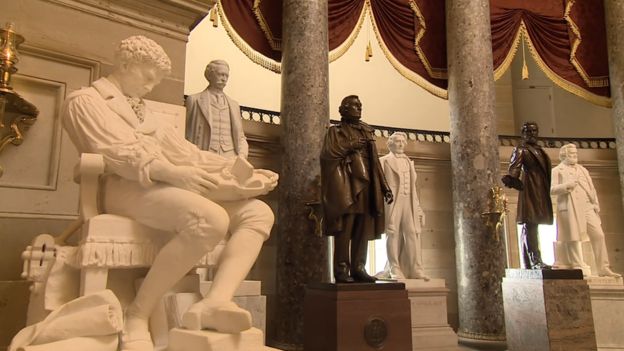
It was put up more than 40 years before Davis had his US citizenship posthumously restored in the 1970s in what was described as an act of reconciliation. This month, the House of Representatives voted to remove all 11 statues from The Capitol.
The nearby Museum of African American History is one of few national institutions that tackles head-on the horrors of slavery. Across the southern United States in particular, even in schools, there is still a reluctance to do that.
But there is growing impatience among many for this side-stepping of uncomfortable American history, from the country’s origins to the present day.
-BBC




